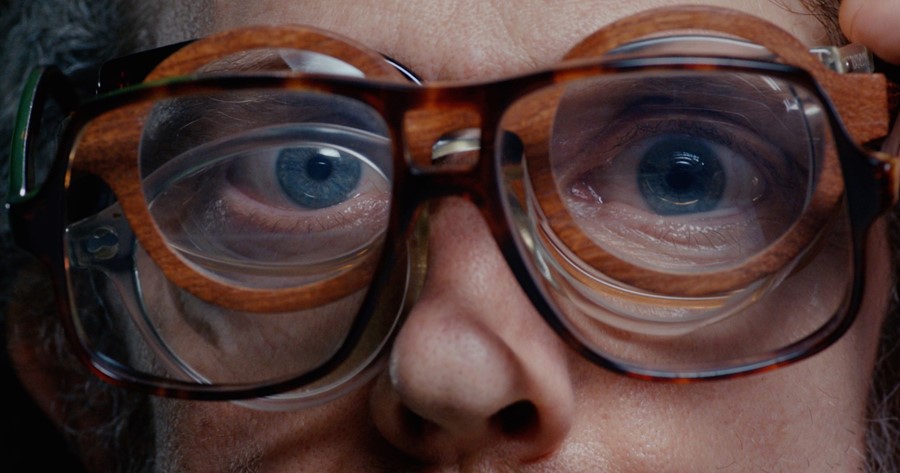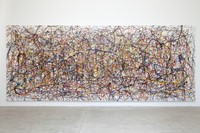The musician and artist talks embracing your natural hair, snazzy dressing and the problem with politicians ahead of his blockbuster summer of shows
Martin Creed's summer is about to explode. The London-based artist has just unveiled an exhibition of new work at Hauser & Wirth's Somerset gallery, while in New York he is shortly to open a large-scale survey at the Park Avenue Armory (a rotating neon sculpture of the word UNDERSTANDING in ten-foot-tall letters has been stationed at Brooklyn Bridge Park's Pier Six since the beginning of May). He's also due to release a new album on the 8th July, called Thoughts Lined Up. Small wonder he plans to disappear to the small Italian island of Alicudi in August.
Nattily dressed in a grey suit and bright orange jumper he got from a nearby charity market, his unruly hair pulled back, Creed is still putting the finishing touches to his Somerset show when we meet. He's been resident here for several weeks, working with members of the local community to make Pollock-inspired drip paintings, arranging detritus from his flat into decidedly artless accumulations, festooning a tree in the garden with plastic bags, and bringing three of his own vehicles — all of them old Fiat models — into the gallery. Displayed in their trunks are paintings, in a playful riff on car-boot sales.
The gallery's many rooms are busy with different versions of the artist. New video Work No. 2656: Understanding, in which he appears variously wearing a prim skirt suit, outsized poncho, or loud 70s shirt (the outfits are all his own), is set to a jaunty track from the album exploring the head-banging nature of arguments. "I'm a victim/ No, I'm a victim/ No, I'm a victim/ No, I'm a victim!" he sings. Elsewhere in the show is a sound installation composed of different, interweaving voice memos (Creed records his thoughts daily), broadcast on a range of speakers. It's a spirited cacophony comprising semi-conscious chatter and a furious rant at the UK's foreign secretary. There's a political dimension to the work on display, with two recent videos, Work No. 2533: Border Control and Work No. 2530: Let Them In, made in response to the refugee crisis.
Creed has never been fond of borders, particularly those erected to separate art from life. The Turner Prize winner — who won in 2001 for Work No 227: The Lights Going On and Off, in which the lights in the gallery did just that — is reluctant to call himself an artist, or to designate what he does as art. "You can't separate things in the world," he says, in his gentle Scottish brogue. "You have to accept the whole environment." Here, he discusses making work with other people, creating an album from sundry audio notes, and why decisions can be so difficult to make.
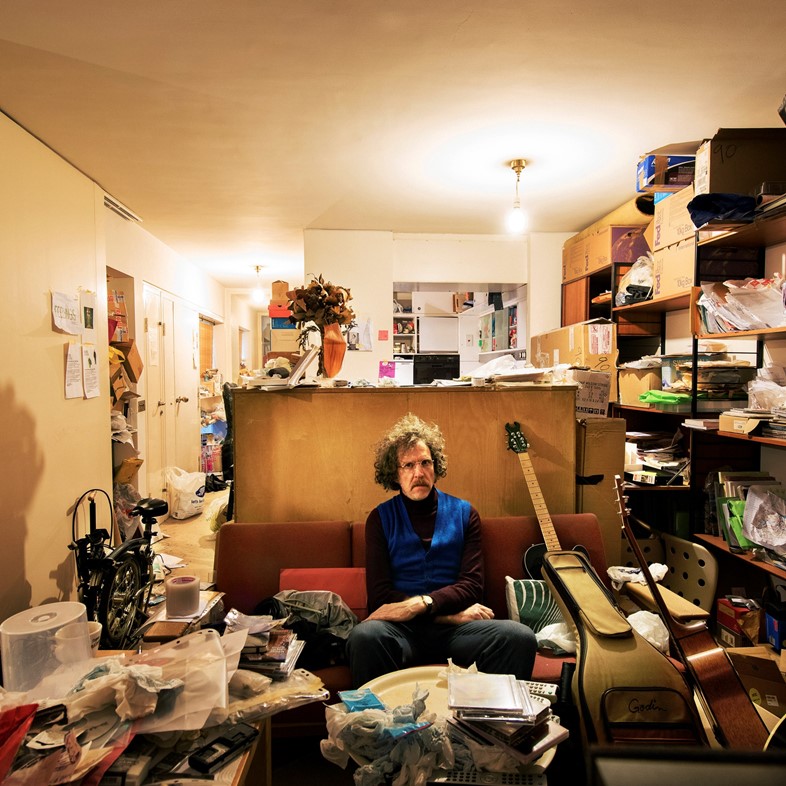
On using the whole room in an artwork...
"You can't look at a painting without seeing the wall next to it, and you can't look at a painting without having your own thoughts. Maybe you have a headache, maybe you just had a coffee or maybe you are talking to someone or maybe someone is walking past or there is some weird wallpaper next to the painting or whatever. You can't separate things and I think that got me into making works that use the whole room. The Lights Going On and Off was a simple example of that, an experiment trying to make the whole room into something, in a simple way."
On including people in artworks...
"I remember when I was at art school making precious little things that I had worked on for ages. I didn't want anyone to touch them, they would get dirty from people touching them with dirty fingers. [But] you have to accept that people are in the world. I try to include people [in my work], actively, not just afterwards. I think it also comes from doing music and live shows and talks and stuff — trying to approach visual art exhibitions like live shows. I feel like it is a bad gig if you try to ignore the fact that there are people there. You might do that because you are scared or it could be for any number of reasons, arrogance or whatever. But I feel like the world never goes well if you are involved in some kind of delusion, if you are trying to pretend that someone isn't there."
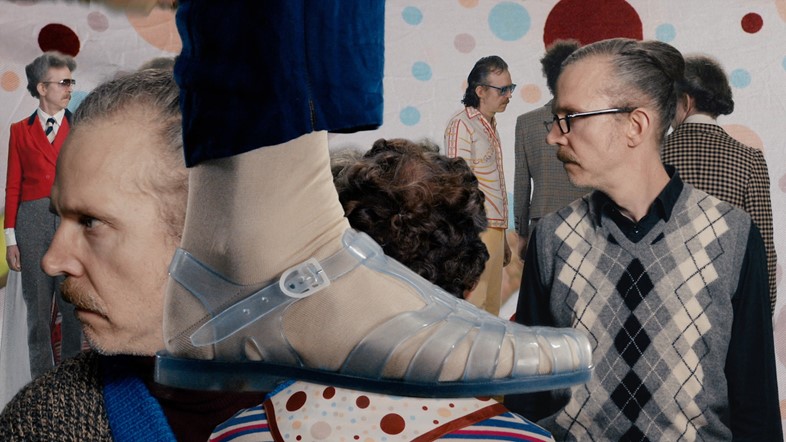
On painting as a collective performance...
"I did a big painting with lots of people in Zurich last year. That was the first time I tried it. Everybody had one colour each. It was like: 'OK! Let's do it', and everybody was helping each other. There is something good about that but the bad side is that maybe people are a bit shy, or the more confident or physically powerful might elbow their way to the front. Another way to do it is like with that big painting in there [Work No. 2692]. Each person did their bit on their own while everyone else watched. They took it in turns, everyone was on stage but also they had their own space, like a soloist in a jazz band. I think it is a lot like music, as you have the instructions, you have the parameters, the structure, the colours and the approaches worked out but then within that the people are like musicians and they have their bit where they are free to do whatever they want to do."
On shortening the distance between thought and artwork...
"Some of the songs I do start as voice memos. But then you're working them up, adding instruments and musicians and then it is like a production. Before you know it, you are removed from that first simple idea. With the voice memos, it's just about trying to take the most direct route as possible from the idea. I have been thinking about that a lot recently, trying to shorten the distance between the original impetus or idea and the finished work. So the voice memos are me trying to be just a lot more direct, although I find it very embarrassing to listen to them. I have them all filed on hard disks. This new album comes mostly from voice notes and stringing them together into songs without necessarily worrying about whether it is a finished song or whether it had a finished meaning."
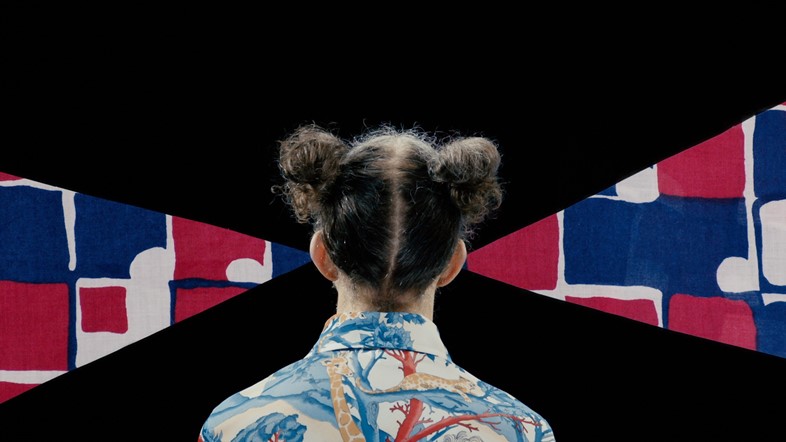
On internal conflict...
"What I think I feel very strongly, always, is this conflicting desire to do something and then something else trying to stop me from doing it. You have ideas and you have immediate reactions and then you feel bad about that and then it's all kind of complicated. I think that is why a lot of politicians piss me off so much, because they don't admit to conflicting feelings."
On surrendering to your natural hairstyle...
"I have had curly hair since I was a teenager. Suddenly it became curly and I didn't want to accept it. I think that your own hair is something that is difficult to accept. That is why a lot of people want to have hair that is not like the hair they have – you know, curly-haired people want straight. It has to do with this stuff that comes out of you that you can't really control. A lot of [my] work is trying to deal with that."
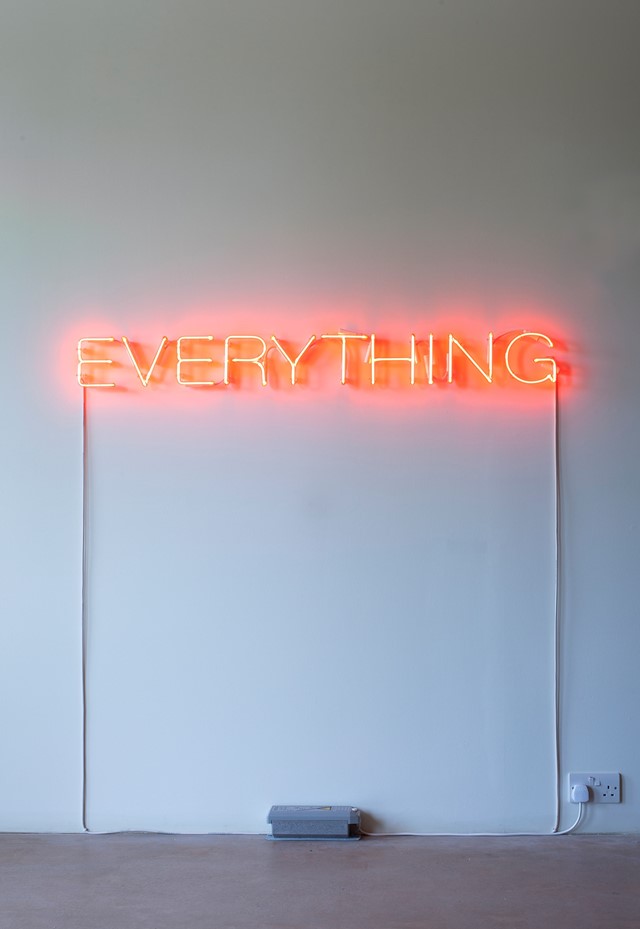
On using his own possessions in his work...
"The clothes in the video [Work No. 2656: Understanding] are all my clothes. I've been trying to improvise a lot of this work with stuff that I've got… I feel like when you're working you have to be really careful, because what you think you're doing is not necessarily what you're really doing. I think working is a lot like body language: it's very hard to know what you're expressing. Other people could probably see it very easily but I feel like I don't know what I'm doing, really. Your work is really what you find that you've done rather than what you think you're doing. More like trying to recognise your own character, or your own nature. Rather than feeling this pressure to create something, it's like, you already are something."
On making sartorial decisions...
"Trying to choose trousers is just as difficult as trying to choose a colour to use in a painting. It's exactly the same. Making any kind of decision is difficult. Narrowing things down, making decisions is against life because life's just messy and moving all the time. So I feel like trying not to decide is better, and that's why there's lots of different clothes and different hairstyles."
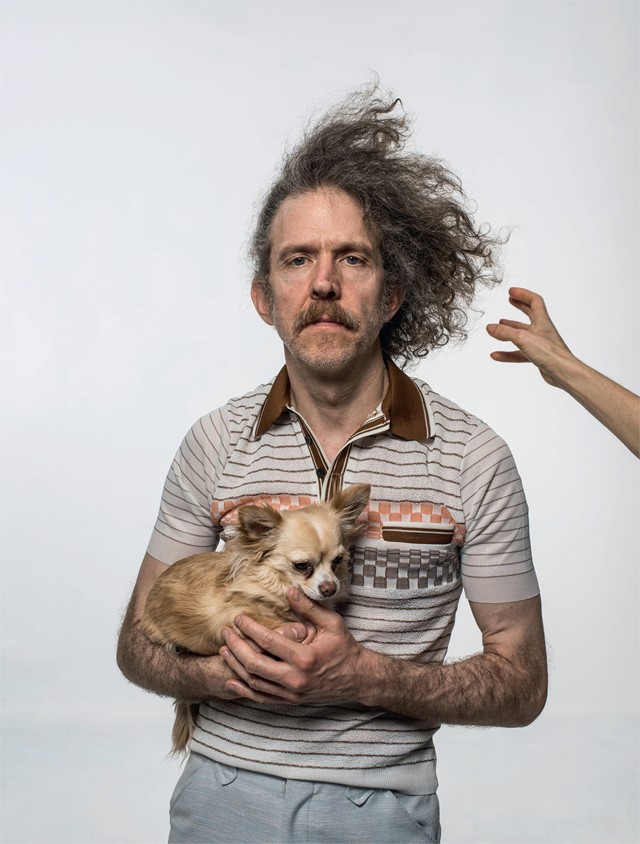
Martin Creed, What You Find runs until September 11, 2016 at Hauser & Wirth, Somerset.
